Some of the links in this post are affiliate links. This means if you click on the link and purchase the item, we will receive an affiliate commission from the vendor at no extra cost to you. These business relationships allow us to keep bringing you great EatMoveHack content. All opinions remain our own.
It can be argued that strong quads are the basis of a strong body. In addition to being some of the largest muscles in your body, your quads also stabilize your knees so you can power through chores and workouts alike without injuring yourself.
If you’re ready to strengthen your lower body, check out the quad-focused exercises below. These are some of the most effective routines you can perform to target these specific muscles. Depending on your reps and resistance, you can use these exercises to build muscle, boost endurance, and improve strength — or all of the above.
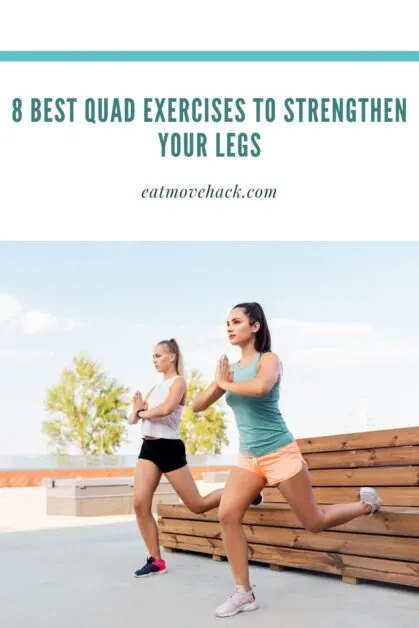
1. Bodyweight Squat
Basic lower-body exercise that requires no equipment and is perfect for beginners
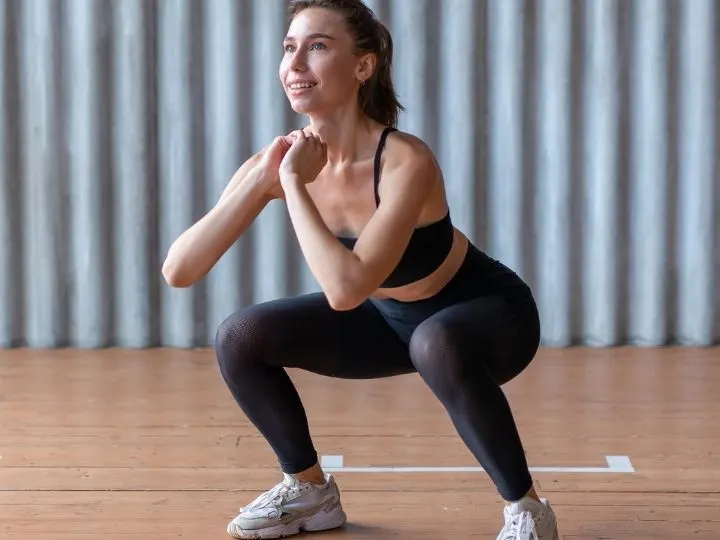
How to do bodyweight squats
- Stand straight with your feet should width apart, and cross your arms in front of your chest for balance.
- Dip into a deep squat until your thighs are parallel to the ground.
- Using controlled movements, power back into a standing position.
2. Front Squat
Another basic squat variation with a bit of added resistance for greater intensity
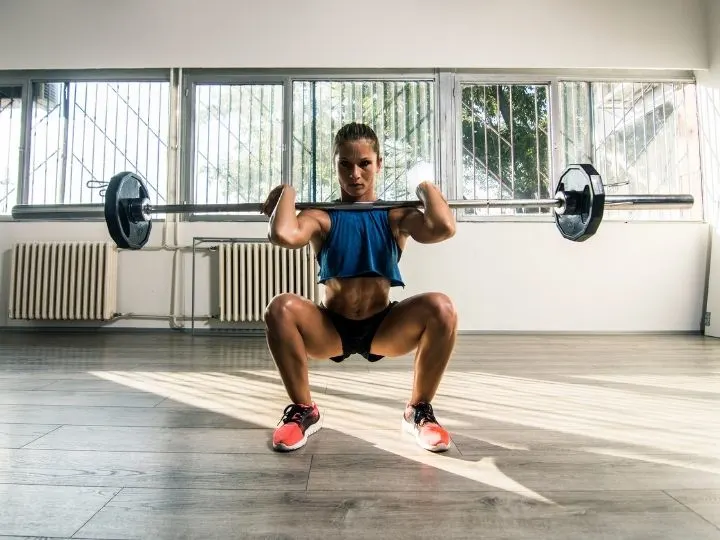
How to do front squats
- Pick up a weight bar, and stand straight up with feet shoulder width apart.
- Lift your arms to bring the weight bar up against your shoulders.
- Move your hands until they’re just outside your shoulders, and hold the weight bar with a fingertip grip.
- Keeping your elbows high to keep the weight bar in place, perform a deep squat, bringing your hips below your knees.
- Hold for a beat, and then power up to the starting position.
3. Bulgarian Split Squat
The Bulgarian split squat works your quads, calves, glutes, hamstrings, and core muscles
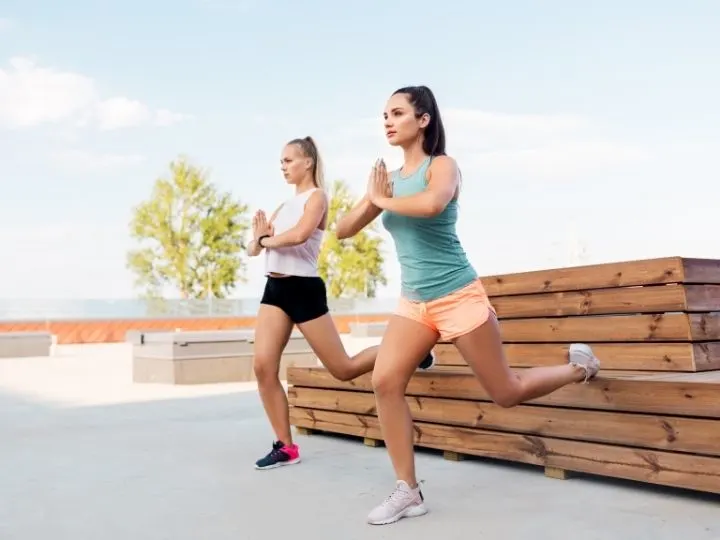
How to do Bulgarian split squats
- Stand with your back facing an exercise bench.
- Lift your left leg back to rest your upper foot on the flat surface. Keep your right leg straight.
- Hold your arms in front of your chest for balance, and then dip into a lunge, stopping before your knee touches the ground.
- Hold the move for a beat, and then raise yourself back up, pushing up with your heel.
- Complete a set, and then switch to having your right foot on the bench.
4. Barbell Squat
Great exercise for working your quads and posterior-chain muscles
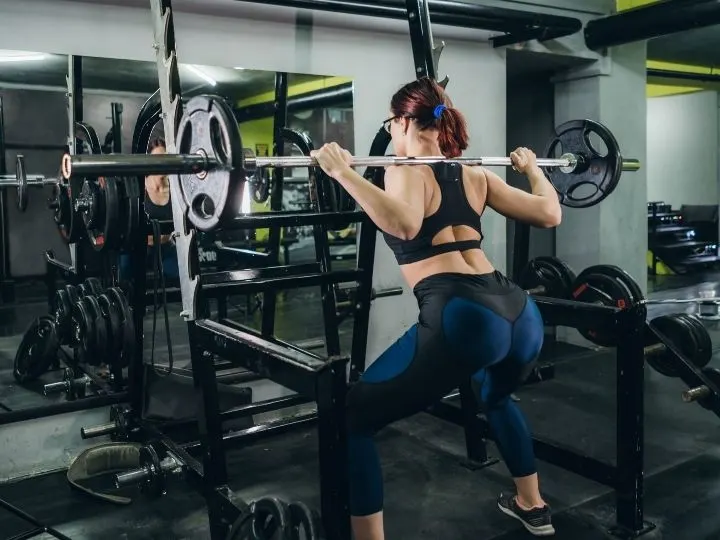
How to do barbell squats
- Stand in front of a barbell rack dipping station, and wrap your hands around the barbell bar at about shoulder width apart.
- Dip under the barbell, and let the bar rest across your shoulders.
- Lift the barbell off the rack, and make sure to keep your feet shoulder width apart.
- Keeping your back straight and your core engaged, dip into a squat position.
- As you reach the bottom of the squat, power upward back to the starting position.
5. Modified Reverse Lunge
Taking a smaller step back allows you to work both your quads and hamstrings
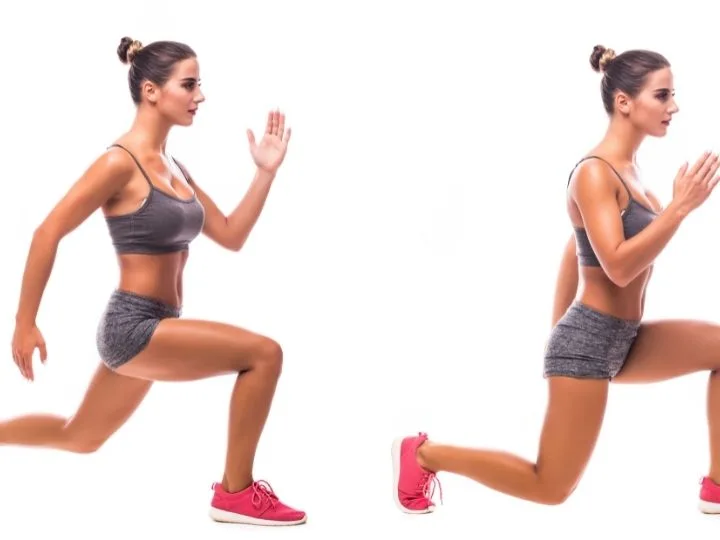
How to do modified reverse lunges
- Stand up straight with your feet shoulder width apart, and hold your arms in front of your chest for balance.
- Take a small step back with your left foot, and continue the movement into a deep lunge, stopping before your knee joint touches the ground.
- Power back up to the starting position, and then repeat the move with your right foot.
6. Squat Jump
These simple jumps target your quads, glutes, hamstrings, and hips
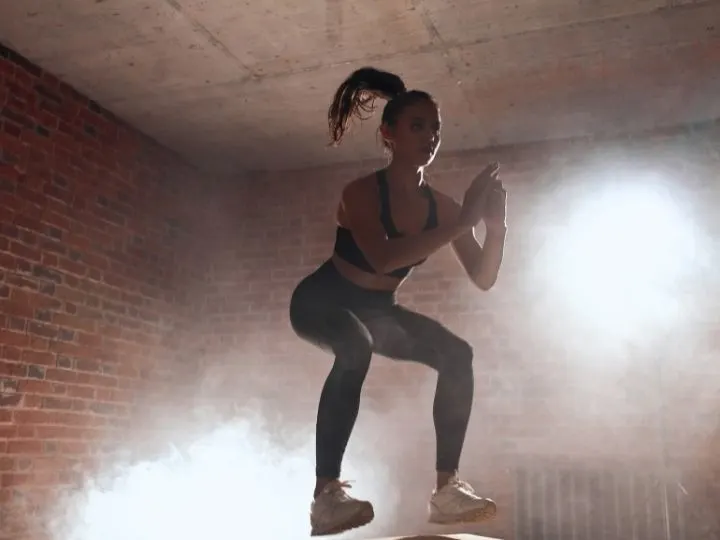
How to do squat jumps
- Stand straight up with your feet shoulder width apart and arms at your sides.
- Lower yourself into a squat, bringing yours arms straight in front of you to help with balance.
- When you reach the bottom of the squat, push with your heels and jump upward as high as you can.
- When you land, continue back down into the squat position to restart the move.
7. Single Leg Squat
A bodyweight squat variation that’s a bit more challenging
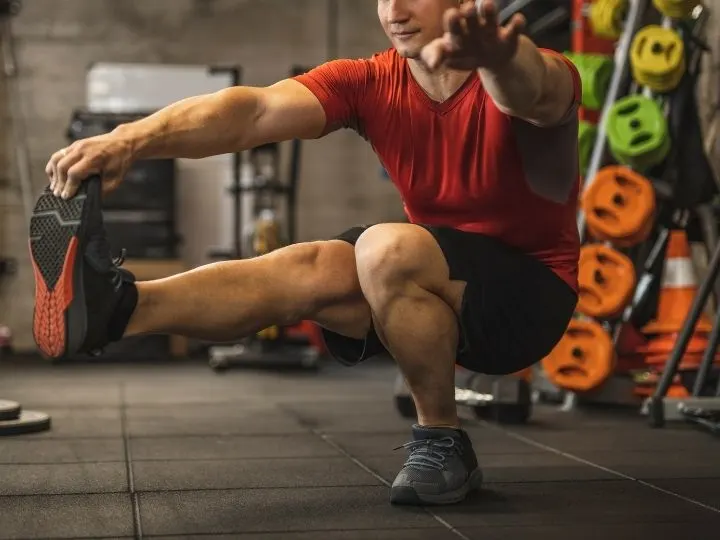
How to do single leg squats
- Stand straight up with your feet shoulder width apart.
- Keeping your left leg straight, lift your right foot up about 6 to 8 inches from the ground, with your toes pointing up.
- Lift your arms directly in front of you for balance, and then bend your hip joint to go into a squat.
- Hold for a beat, and then power back up into the starting position.
- As you become comfortable with the move, dip into lower squats for a greater challenge.
- After completing your set, lower your right foot, and raise your left foot to work your other leg.
8. Leg Extension
Targeted lower body exercise specifically for the quads
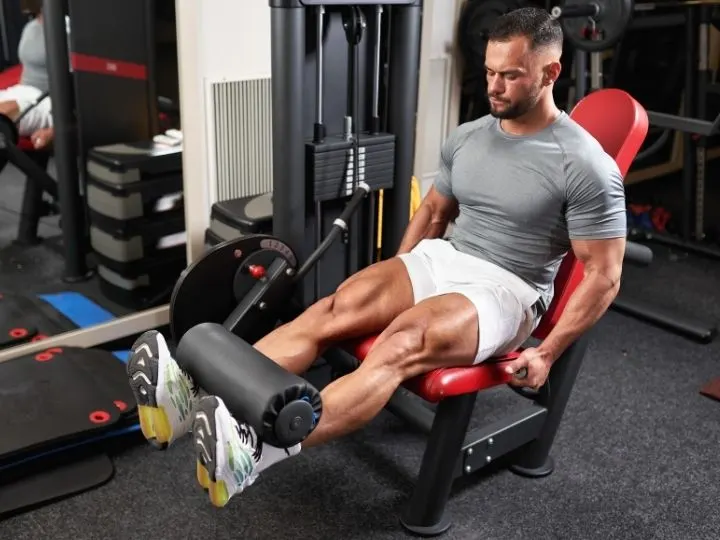
How to do leg extensions
- Prepare a leg extension machine by adjusting the backrest, leg pad, and weight stack.
- Sit down on the machine, with torso upright and back firmly against the backrest, and grip the handles.
- With controlled movements, extend your legs up and hold for a beat. To prevent injury, don’t aim for legs straight; instead, leave a slight bend to your knees.
- Lower your legs until the weights on the stack almost touch, and then immediately repeat the exercise.
What are the Quad Muscles?
As the name suggests, the quadriceps muscles are made up of four muscles: the rectus femoris, vastus medialis, vastus lateralis, and vastus intermedius.
These muscles make up most of your thighs, extending from your hips to your knees on the front and sides of your legs, and are responsible for stabilizing your hips and allowing for forward propulsion as you walk.
The Benefits of Having Strong Quads
One of the biggest benefits of quad training is that it will help you build up bulk in your upper legs. Strong legs better support your hips and knees so you can get around easier and reduce your risk of injury.
As an added benefit, having more muscle also helps you burn more calories, even when you’re not actively exercising.
If you like the idea of power lifting, it’s important to strengthen the muscles in your legs as they have a direct correlation to your overall performance. The stronger your legs, the more strength you’ll have for your other workout training.
Getting the Most Out of Your Quad Exercises
Use the following tips alongside the quad-focused exercises above to see the best results from your workout sessions.
Vary Your Sets to Build Strength, Bulk, and Endurance
Deciding how many reps and sets of quad exercises you should do during each workout depends on what you’re trying to achieve:
- Gain strength: 3 to 6 reps per set
- Add muscle: 8 to 12 reps per set
- Build endurance: 15 to 20 reps per set
If you’re trying to achieve all three goals, vary your routine with each workout. For example, set aside one day to work on strength training, and then concentrate on muscle building during your next workout.
Defeating Plateaus
Should you find yourself hitting a plateau, try a process called overloading. At your next workout, pick a barbell or weight exercise and add one rep to each set.
After doing this for a couple of weeks, return to your original number of reps, but increase your weight by 10 pounds.
Do Your Harder Quad Exercises First
Many of the best quad exercises are compound exercises that target multiple muscles throughout your legs, hips, and core. These types of movements ask a lot of your body, so you’ll want to ensure you practice proper form to prevent injuring yourself.
As such, perform these exercises at the beginning of your workout routine, when you have lots of energy. As you become fatigued, you can shift to exercises that aren’t as challenging.
Split Up Exercises as Needed to Maintain Performance
If you’re aiming for muscle growth, you need to make sure that you don’t overwhelm your workouts by trying to fit in too many quad exercises.
If you find yourself slowing down, unable to make your reps, other otherwise lacking in performance, it’s time to split up your leg exercises over several days.
Warming Up for Quad Exercises
Warming up before exercise is an important part of the process. It prime those muscles you’ll be targeting so they’ll be more responsive to your efforts.
To start, stretch thoroughly to increase your range of movement. When it comes to squats, especially, you need that range of motion to get into those deep squats that will produce the best results.
From there, concentrate on specific muscles. Perform exercises that require weights, but do them without the load to get pumped up. Increase the intensity of your warm up until you’re ready to complete your full sets.
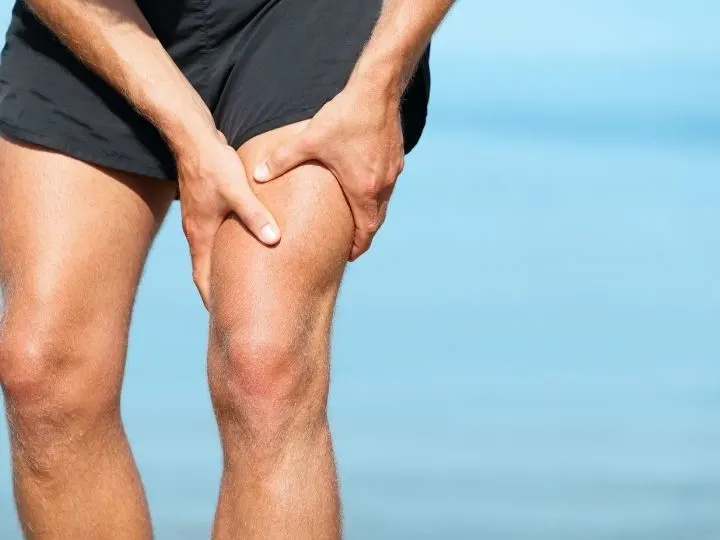
FAQs
Do I need equipment to work out my quads?
There are lots of quad exercises, and while many require a weight bar, barbell, dumbbells, and other weight equipment, there are also many that don’t require any equipment at all.
The bodyweight squat is an excellent example of an effective exercise that doesn’t require any equipment. It uses your own weight for resistance. If you want more of a challenge, you can do single leg work, carrying the entire load of your weight on one leg at a time to essentially double your resistance.
Can I strengthen my quads without bulking up?
Exercising your quads doesn’t have to lead to huge muscles, though it certainly can if you want it to.
The key to gaining strength without building bulk is to limit reps. Aim for just 3 to 6 reps per set, and you’ll strengthen and tone your quads for a sleek look.
How often should I exercise my quads?
As a general recommendation, you should work out your quads three times a week. Limit your exercise to 20 minutes per session, and allow at least one rest day between workouts.
If you’re aiming to build muscle, you can increase your workouts to four times per week, but don’t go over this as these large muscles need adequate rest so you don’t get hurt.
Are lunges and squats the same thing?
Lunges and squats are similar exercises; a starting lunge position and a starting squat position can look exactly the same. But there is one key difference: Lunges are a motion exercise, taking you forward, backward, or side to side. A split squat, on the other hand, is a static exercise — the only movement is the up and down as you dip into the squat.
Wrapping Up
Strong quads play a big role in improving your fitness and overall health. They stabilize your knees and lower body for all kinds of activities, from walking to power lifting, to keep you moving forward.
The quad exercises above are some of the best for strengthening your lower body and will help you add muscle, build endurance, and gain strength, depending on how you perform them.
Looking to fill out your upper body too? Check out our best triceps exercises for ways to strengthen and sculpt your arms.

